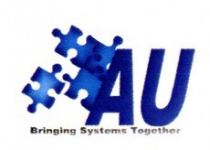North America Solder Materials Market Forecast to 2030 by Product (Wire, Paste, Bar, Flux, and Others), and Process (Screen-printing, Robotic, Laser, Wave/Reflow) - ResearchAndMarkets.com
The "North America Solder Materials Market Forecast to 2030 - COVID-19 Impact and Regional Analysis by Product (Wire, Paste, Bar, Flux, and Others), and Process (Screen-printing, Robotic, Laser, Wave/Reflow" report has been added to ResearchAndMarkets.com's offering.
The North America solder materials market is expected to grow from US$ 341.90 million in 2019 to US$ 527.74 million by 2030; it is estimated to grow at a CAGR of 4.1% from 2020 to 2030.
The electronic industry has seen a rise in demand for solder materials which is driving the growth of the market. Rising demand for various smart electronics and the advent of energy-efficient electronics are considered as the major factors expected to drive the North America solder materials market. For electrical & electronics work, solder wire is available in a range of thicknesses for hand-solder and with cores containing flux.
Plumbers mostly use bars of solder, much thicker than the wire used for electrical applications and then apply flux separately; note that many plumbing-suitable solder fluxes are too corrosive (or conductive) to be used in electrical or electronic work. Hence, the solder materials market is likely to be propelled by the development in the sector of electronic refurbishing. Availability of various products is also among the other factors expected to positively influence the demand for solder materials.
The COVID-19 pandemic has heavily impacted the North America solder materials market. The US has the highest number of confirmed cases of COVID-19 compared to Canada and Mexico. Due to the COVID-19 outbreak, the supply and distribution chain is likely to get affected.
Based on product, the wire segment led the North America solder materials market in 2019. A soldered joint is basically used to attach a wire to the pin of a component on the rear of a printed circuit board. Solder wire is comprised of different types of alloys, or of pure tin. Each metal requires a certain type of solder wire to create strong bonds, since the combinations of metals that comprise solder wire melt at different temperatures.
The most common metals utilized in solder wire are Lead (Pb) as well as Tin (Sn). Soft solder basically melts in the range of 190-900F. Some assemblies require the elimination of lead from the solder owing to its toxicity, and in these cases, some other elements would be substituted for the lead. Lead-free solders are increasing in use owing to regulatory requirements along with the health & environmental benefits towards avoiding lead-based electronic components.
Major players operating in the market include Fusion Incorporated; Indium Corporation; Kester; KOKI Company Ltd.; Lucas-Mihaupt Inc.; Qualitek International Inc.; Senju Metal Industry Co., Ltd.; Stannol GmbH and Co. KG; and Tamura Corporation.
Key Topics Covered:
1. Introduction
1.1 Study Scope
1.2 Report Guidance
1.3 Market Segmentation
2. Key Takeaways
3. Research Methodology
4. Solder Materials Market Landscape
4.1 Market Overview
4.2 North America PEST Analysis
4.3 Expert Opinion
5. Solder Materials Market - Key Industry Dynamics
5.1 Key Drivers
5.1.1 Electronic Industry has seen a rise in demand
5.1.2 Various Products are available for use
5.2 Key Restraints
5.2.1 Numerous Conditions are imposed by Authorities upon the Solder Materials
5.3 Key Opportunities
5.3.1 Continuous R&D Initiatives
5.4 Future Trends
5.4.1 Increasing Use of Automatic Solder Over Manual Solder
5.5 Impact Analysis of Drivers and Restraints
6. Solder Materials Market - North America Market Analysis
6.1 North America Solder Materials Market Overview
6.2 North America Solder Materials Market -Revenue, and Forecast to 2030 (US$ Mn)
6.3 Market Positioning - Key Market Players
7. North America Solder Materials Market Analysis - By Product
7.1 Overview
7.2 North America Solder Materials Market Breakdown, By Product, 2019 & 2030
7.3 Wire
7.3.1 Overview
7.3.2 Wire in Solder Materials Market, Revenue Forecast to 2030 (US$ Mn)
7.4 Paste
7.5 Bar
7.6 Flux
7.7 Others
8. North America Solder Materials Market Analysis - By Process
8.1 Overview
8.2 North America Solder Materials Market Breakdown, By Process, 2019 & 2030
8.3 Screen-Printing
8.3.1 Overview
8.3.2 Solder Materials Market Revenue Via Screen-Printing Revenue and Forecast, to 2030 (US$ Mn)
8.4 Robotic
8.5 Laser
8.6 Wave/Reflow
9. Solder Materials Market - Country Analysis
9.1 Overview
10. Impact of COVID-19 Pandemic on North America Solder Materials Market
10.1 North America: Impact Assessment of COVID-19 Pandemic
11. Industry Landscape
11.1 Merger and Acquisition
11.2 Product News
11.3 Strategic Recommendations for the New Entrants
11.3.1 Government Regulations
11.3.2 Development of Sustainable Solder Materials
11.3.3 Total Solder System along with Technical Expertise Offered to Customers
11.3.4 Strategic Investment in R & D and New Product Development
11.3.5 Business Development Through Alliances and Collaboration
11.3.6 Diversification of Application Base of Solder Materials
11.3.7 Focus on Quality Product Offerings
11.3.8 Geographical Expansion in New Markets
11.3.9 Price Competitiveness
11.4 Strategic Market Developments
12. Key Company Profiles
12.1 Key Facts
12.2 Business Description
12.3 Products and Services
12.4 Financial Overview
12.5 SWOT Analysis
- Fusion Incorporated
- Indium Corporation
- Kester
- KOKI Company Ltd
- Lucas-Milhaupt, Inc.
- Qualitek International, Inc.
- Senju Metal Industry Co., Ltd
- Stannol GmbH & Co. KG
- Tamura Corporation
For more information about this report visit https://www.researchandmarkets.com/r/3trldj
View source version on businesswire.com: https://www.businesswire.com/news/home/20201125005526/en/




